Digital marketing can work well for physiotherapists and deliver a healthy return on investment (ROI).
But maybe that’s not been your experience with marketing your physiotherapy practice. Perhaps you created a stylish website. Maybe you even engaged a marketing agency which bamboozled you with jargon and left you underwhelmed by the results. That happens.
Having worked with many physiotherapy practices, we (the team at Splice Marketing) know that digital marketing is an effective way to gain new patients for your physiotherapy practice. Here are the 5 strategies that we have proven to deliver a good ROI and gain new patients. This article will provide a good direction on how you can implement these strategies, or if you’d like further support, you can book a 30 min free marketing consultation with one of our growth marketing experts.
1. SEO
Search engine optimisation (SEO) is the ongoing process of cultivating a mutually beneficial relationship with Google.
Google wants to please its users by delivering them relevant, high-quality search results. You want Google to put your website right up there at the top of the results when someone searches for a service you offer. That means you need to optimise your website to convince Google that your site is relevant and trustworthy.
Effective SEO involves many different factors. Try these two for starters:
- Target relevant keywords on each page. When someone searches for ‘physiotherapy for knee pain’, Google looks for a good match. That’s why you might need a page on ‘physiotherapy for knee pain’ which uses those keywords in the title tag and the content.
- Establish your Google Business (formerly Google My Business) listing as this means you will appear in local searches. When someone searches for ‘physiotherapist’, Google assumes they implicitly mean ‘near me’. If you’ve accurately answered every question in your Google Business listing, then your practice should appear on the search results map.
2. High-converting website
Is your website a couch potato or a weight lifter? Your website needs to do more than just sit there online. It needs to push people along the journey from landing on your website to walking into your practice.
Pretend you’re a prospective patient and take a look at your website now, ideally using your phone. Does it:
- Look and work well on your mobile?
- Load quickly? If it takes more than a few seconds, people will look elsewhere. Test your site speed.
- Display any warnings about your site security? If so, you need to get an SSL certificate to prevent Google from warning people off.
- Clearly articulate who you are and what you do, with separate pages for each service you offer?
- Make it easy for patients to book? Place your phone number and online booking link in the top right hand corner and include regular calls to action throughout your copy.
Not sure how your website performs? Google Analytics will tell you. It’s a free tracking tool that shows you how many people come to your site, where they come from, how long they spend there and which pages they like most.
3. Social media marketing
Used well, your Facebook page or Instagram account can help drive people to your website where they can learn more about your practice and book.
So, share:
- Photos and profiles of your practice staff
- Blogs that help people understand common musculoskeletal conditions
- Healthy posture or lifestyle tips
- Information about your practice’s opening hours or special events.
Whatever you post, make sure you’re mindful of AHPRA’s advertising regulations for social media.
4. Content marketing
Physiotherapy digital marketing relies heavily on content marketing. That content could be videos, blogs, downloadable resources or infographics.
You are a highly trained healthcare professional. Content marketing is a way of sharing that expertise. When someone searches for ‘lower back pain’, they’re probably looking for help. If you’ve written a blog on that, Google can show it to them.
Now, many of those people will live too far away to come to your practice (do you offer telehealth?). But consistent content marketing helps Google to recognise your credibility and trust your content. That improves your Google rankings and puts your site in front of more patients.
Content marketing also helps to convert people who do live locally and might become patients. Most of them will spend time exploring your site before deciding to book.
Content marketing takes time and planning. To do it well we recommend you:
- Identify your target audience. Reflect on your patients and group them into a few types. You might even create a few marketing personas to help you keep your audience in mind as you create content for them.
- Create a content plan. Sit down with your calendar and plan out a series of posts over the next 3 months. Aim for a mix of different content such as social media posts, blogs or ‘how to’ guides.
- Schedule regular time for copywriting.
- Publish your content regularly, maybe twice a month. Share it to your socials and pay to boost it if necessary.
Don’t have time to write content? Splice Marketing has an incredible healthcare copywriter who can help. Contact us to discuss your content needs.
5. Paid search
Paid search refers to advertising on a search engine like Google. Google ‘physiotherapist’ right now and you’ll see that the first few listings have the word ‘Ad’ next to them. These are ads being run by physios in your area to attract patients. You can be one of them.
Paid search is a highly targeted form of advertising where you can focus on a defined audience by identifying certain characteristics such as age, location, gender or interests and then promote your ads to them.
It’s a great option because your ads are being served to people who are actively looking for services that you provide. This is a warm audience who may just need a nudge in your direction. Paid search helps them find you. It’s also quite cost-effective because you only pay when someone clicks on your ad.
Wondering what to put in your ad? It depends on your goal. If you want more patients overall, your ad may just be about physiotherapy. If you’ve started a new service, then your ad may be more specific, focused on dry needling, for example.
Now you need to choose the right keywords. Google’s Keyword Planner tool helps you here. It helps you identify relevant keywords and their search volume, narrows them down to the most useful ones and then shows you estimated pricing for each one to help you stay within your budget.
Once someone clicks on your ad, they’ll be taken to your landing page. If you’re advertising generally for ‘physiotherapy’ then the landing page might be your homepage to showcase your practice. If you’re advertising for ‘dry needling’ then Google may not think your homepage is relevant. It would be better to link to a services page that’s all about dry needling (if you don’t have one yet, then create one). Make sure your landing page contains a clear call to action like ‘book now’ with a link to your online booking system or phone number.
Search marketing has another benefit: it’s easily trackable. Google Analytics enables you to see how many people viewed your ad, clicked on it, visited your site and made a booking. It shows you how much you spent and how many new patients you generated. That means you can calculate your ROI.
Not sure how to use Google Analytics? Enrol in Google’s free beginners course.
Stand out from your competition
Physiotherapy is a growth area in the Australian economy. Patients, particularly those in large cities, are spoilt for choice when it comes to finding a physio.
If your competitors are running Google Ads, maintaining engaging social media accounts and hosting a content-rich, SEO-friendly, high-converting website then you absolutely need to be doing that too for your physiotherapy practice. Your new patients are looking online. Will they find you there?
As we said at the beginning, digital marketing works well for physiotherapy practices. It delivers a strong return on investment and can help your practice grow.
Yes, it takes a bit of work but that work pays dividends. And, let’s face it, if you don’t put the time into marketing (or hire others to do it for you), you risk having far too much time on your hands down the track.







